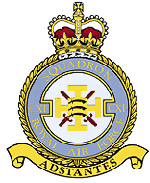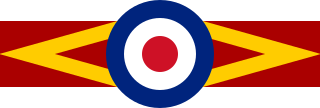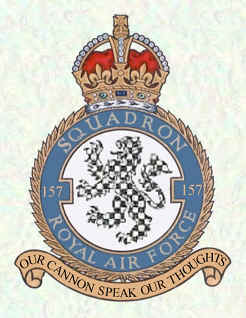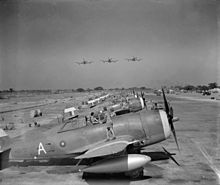No. 155 Squadron RAF is a former Royal Air Force squadron.

Number 17 Squadron, currently No. 17 Test and Evaluation Squadron (TES), is a squadron of the Royal Air Force. It was reformed on 12 April 2013 at Edwards Air Force Base, California, as the Operational Evaluation Unit (OEU) for the Lockheed Martin F-35B Lightning.

Number 28 Squadron, also known as No. 28 Squadron or No. 28 (AC) Squadron, is a squadron of the Royal Air Force. Based at RAF Benson, it serves as the RAF's Operational Conversion Unit for the Westland Puma HC2 and Boeing Chinook HC5/6/6A helicopters.

Number 111 (Fighter) Squadron, also known as No. CXI (F) Squadron and nicknamed Treble One, was a squadron of the Royal Air Force. It was formed in 1917 in the Middle East as No. 111 Squadron of the Royal Flying Corps during the reorganisation of the Egyptian Expeditionary Force after General Edmund Allenby took command during the Sinai and Palestine Campaign. The squadron remained in the Middle East after the end of the First World War until 1920 when it was renumbered as No. 14 Squadron.

Tain Air Weapons Range is a Ministry of Defence air weapons range on the Dornoch Firth near Tain in Scotland. Royal Air Force aircrews from RAF Lossiemouth are trained in air weaponry on the range, along with NATO aircrew.

No. 607 Squadron is an auxiliary squadron of the Royal Air Force. It was formed in 1930 as a bomber unit in the Auxiliary Air Force and changed in 1936 to the fighter role. It fought in that role during the Second World War in Europe and Asia. After the war, in 1946, the squadron reformed as a fighter unit. Awarded the title Royal Auxiliary Air Force by King George in 1947, 607 Sqn was disbanded with all the other flying units of the RAuxAF on 10 March 1957. It reformed on 5 January 2015, as a General Service Support Squadron (GSS).
No. 684 Squadron RAF was a photo-reconnaissance squadron of the Royal Air Force from 1943 to 1946.

No. 266 (Rhodesia) Squadron RAF was a squadron of the Royal Air Force.
No. 681 Squadron RAF was a photo-reconnaissance squadron of the Royal Air Force during the Second World War.

The name No. 67 Squadron has been used by the Royal Flying Corps and the Royal Air Force for two quite different units.
No. 113 Squadron began service in 1917 with the Egyptian Expeditionary Force commanded by General Edmund Allenby. Initially, the squadron was a unit of the Royal Flying Corps, serving during the Sinai and Palestine Campaign and as a reconnaissance, army cooperation, bomber, fighter, transport and missile operation squadron during its existence.
No. 261 Squadron RAF was a squadron of the Royal Air Force during World War I and World War II. It was involved in the defence of Malta from August 1940 till May 1941 and the campaign in Burma.

No. 239 Squadron RAF was an anti-submarine squadron of the Royal Air Force during World War I. During World War II the squadron performed as an army co-operation squadron and later as a night intruder unit. After the war the squadron was disbanded.

Number 80 Squadron is a squadron of the Royal Air Force. It was reformed on 15 April 2024 at Eglin Air Force Base, Florida, after the numberplate was awarded to the British team at the Australia, Canada and United Kingdom Reprogramming Laboratory (ACURL). It was a Royal Flying Corps (RFC) and Royal Air Force (RAF) squadron active from 1917 until 1969. It was operative during both the First and Second World Wars.
No. 258 Squadron was a Royal Air Force squadron during the First and Second World Wars.

No. 615 Squadron was a unit of the British Auxiliary Air Force and later the Royal Auxiliary Air Force between 1937 and 1957.
No. 232 Squadron of the Royal Air Force was active in both the First and Second World Wars in a variety of roles, having seen action as an anti-submarine patrol, fighter and transport squadron.
No. 136 Squadron RAF was a short-lived RAF unit that saw no action in World War I, but upon reformation became the highest scoring unit in South East Asia Command during World War II. Shortly after the war the squadron was disbanded.
No. 134 Squadron RAF was a part of the Royal Air Force which was formed as a light bomber unit in World War I and reformed as a fighter squadron in World War II.

No. 157 Squadron RAF was a Royal Air Force Squadron active as a night fighter unit in the Second World War.











